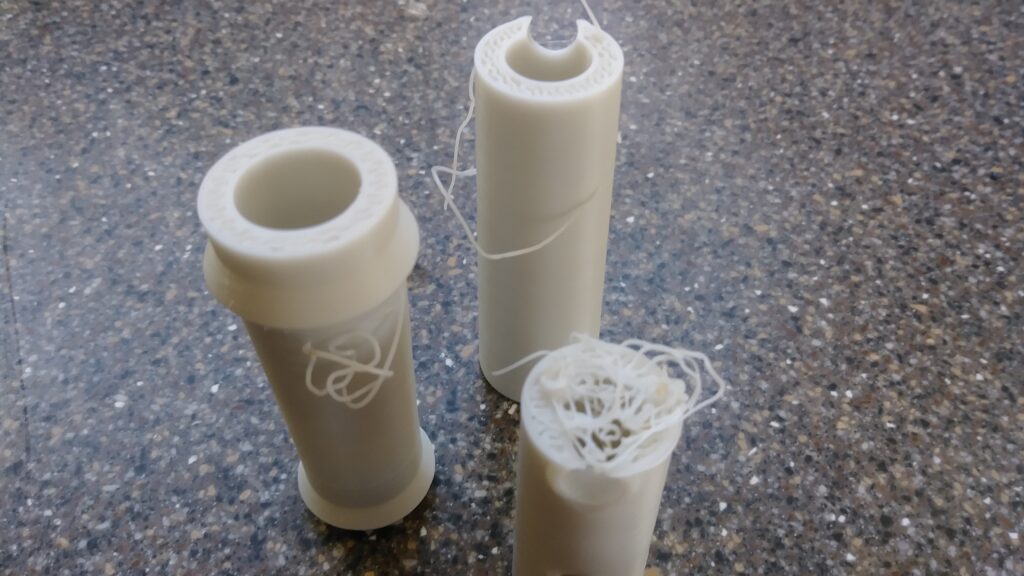Spaghetti? What do we call this failure?
I was trying to print this flute: https://www.thingiverse.com/thing:31613 with 50% gyroid infill, print ran fine for a while, but then I have no clue what happened. Nozzle has some string on it and 2 of the pieces were mostly OK, but they have big strings attached too. The shorter piece was knocked over and the upper portion looked like it tried to continue printing...
Is there a name for this failure? ...and how do we fix it? I was at 90% speed, 1.08 extruder multiplier, hotend was 215 first layer then 210, bed was 75 first layer then 50. Slice was 0.15mm height, 0.2mm first layer, and no skirt.
RE: Spaghetti? What do we call this failure?
It happens when the print loses adhesion with the bed. Particularly an issue with tall thin objects like these.
Follow normal practices to maximise bed adhesion, e.g. brim, glue stick. You might also try printing the objects singly, to avoid the nozzle knocking objects over.
RE: Spaghetti? What do we call this failure?
With a pei smooth sheet there is absolutely NO need to use a glue stick especially with PLA. IF the sheet is properly clean and free of all oils and grease. This means cleaning with plain dish soap (fairy/dawn) and LOTS of HOT water to rinse it all away. It works much better than alcohol wipes.
Take it to the sink and scrub it with soap and a clean paper towel and then rinse and dry with more clean paper towels. Something like that flute shouldnt even need a brim.
I would reduce the % infill down to 20% max, an extra perimeter gets you far more strength than any infill percentage. Its quite likely that the infill is curling up as it cools and this is causing the extruder to catch on the previous layer. Reducing the amount of infill will let it cool more and reduce this tendency. Also if you are printing pla then 75 degrees is too hot for the bed, pla softens at above 60 and I've seen that cause problems with the first layer. I used to print with a 60 degree bed but now I've dropped it to 50 without issue.
For example of what is possible with a clean sheet, this part has a very small footprint as it even has a hole in the bottom but even with the height and angle it prints and sticks perfectly. I've printed this part 4 times now without issue -


